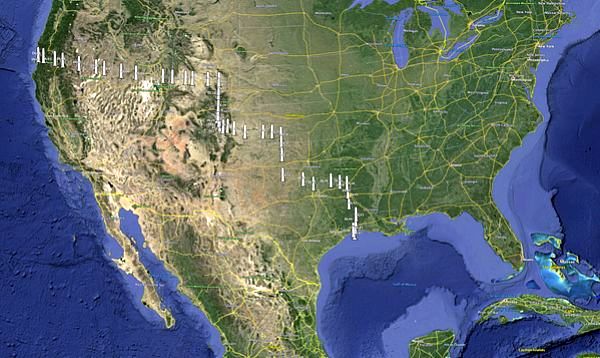San Diego, California - There's a new art installation along the U.S. border with Mexico, but it's probably not the border you're thinking of.
This installation starts as far north as Oregon, goes through parts of Wyoming, Kansas and Oklahoma and ends at the Gulf of Mexico.
 |
The project, "DeLIMITations: A Survey of the 1821 United States-Mexico Border," was partly funded by the Museum of Contemporary Art San Diego. The culmination of that project, including photographs, video and sculptures is on display at the museum's downtown San Diego location through November.
Ramirez and Taylor, who began erecting the monuments in 2014, also blogged about their experience on Tumblr.
"We did a lot of research before trying to locate the monuments in the right places and also to make it easy for us to put two or three a day," Ramirez told KPBS Midday Edition.
Taylor said most people who've seen their work were curious and enthusiastic, but they have received some push back as well.
"For most people we encountered, the idea that the border had been in a different place than it is now, that was evident to them," he said. "They understood that the United States claimed what was the territory of Mexico at one time. But a lot of people didn't know, including myself before we started the project... San Diego, of course, is a very complex community, given its proximity to the contemporary border. I can imagine that the reaction will be quite varied."
Original article


